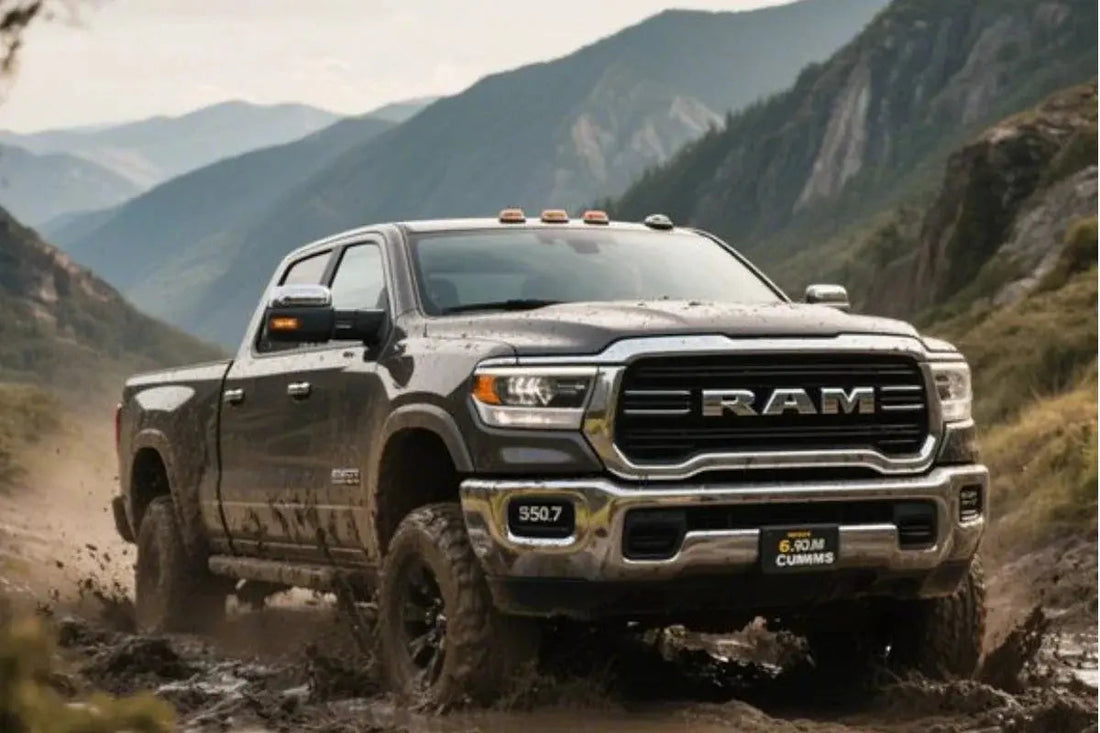What Is a Straight Pipe Exhaust System?
A straight pipe exhaust system is a performance modification designed to reduce back pressure and maximize exhaust flow, commonly applied to diesel trucks like the 6.7 Cummins exhaust, 6.7 Powerstroke exhaust, and Duramax exhaust platforms.
In the strict sense, a straight pipe means removing all restrictive components from the exhaust system—such as the DPF, catalytic converters, mufflers, and resonators—resulting in a direct, unrestricted exhaust path. Owners of trucks like the 2017 F250 or 2018 Cummins often install DPF delete pipe 6.7 Powerstroke or 6.7 Powerstroke race pipe systems to unlock full engine potential.
Broadly speaking, straight pipes can also include systems like DPF-back, turbo-back, or downpipe-back exhausts, which eliminate some, but not all, restrictions. These setups still improve exhaust flow and are commonly referred to as straight pipe systems. The SPELAB product line covers a full range of performance upgrades for diesel trucks.
Does Straight Pipe Add Horsepower?
Yes—straight pipe exhaust systems can increase horsepower, but the amount depends on the specific type of system installed.
Different configurations offer varying levels of performance gains depending on how much of the factory exhaust restriction is removed. Below, we break down the horsepower gains you can expect from each major type of straight pipe system—including DPF delete kits, turbo-back, and more.
How Much Horsepower Can a DPF Delete Kit or Race Pipe Add?
Among all types of straight pipe exhaust systems, the DPF delete kit or DPF race pipe is known for delivering the most noticeable power gains.
Typically, a DPF delete pipe alone can add 10 to 30 horsepower, depending on the setup. When paired with ECU tuning or other airflow mods, gains can exceed 50 horsepower. In addition to more power, drivers report quicker throttle response and reduced turbo lag—greatly improving the overall driving experience.
DPF delete systems can also reduce engine heat stress and help prolong the life of the turbo and EGR components. That’s why many diesel owners choose SPELAB straight pipe exhaust for their DPF delete needs—to achieve both short-term performance and long-term engine durability.
How Much Horsepower Does a DPF-Back System Add?
A DPF-back exhaust system replaces the section of the exhaust after the diesel particulate filter, including the mid-pipe and muffler. While it retains the emissions components up front, this type of straight pipe exhaust system can still improve performance by using larger pipe diameters (like a 5 inch exhaust pipe) and smoother flow paths.
On average, a DPF-back setup may provide a 5–10 horsepower increase. Though not as dramatic as a full DPF delete or turbo-back system, it offers better compliance and ease of installation—ideal for users in regions with stricter emission rules.
Besides slight power gains, DPF-back systems deliver a deeper exhaust tone, improved throttle smoothness, and more efficient airflow. SPELAB straight pipe exhaust includes a range of high-quality DPF-back options, with stainless steel builds and 4 to 5 inch pipe sizes—making it a reliable entry-level upgrade.
How Much Horsepower Does a Turbo-Back System Add?
A turbo-back exhaust system replaces the entire exhaust path starting from the turbo outlet, including the downpipe, DPF, muffler, and tail section. This makes it one of the most comprehensive and powerful forms of a straight pipe exhaust system.
On average, it can add 20–40 horsepower, and when paired with tuning and other mods, gains can exceed 50 horsepower or more.
Aside from raw power, turbo-back systems reduce turbo lag, improve throttle response, and offer a deeper, more aggressive exhaust tone. SPELAB straight pipe exhaust offers a variety of turbo-back configurations in 4 inch and 5 inch pipe sizes, featuring stainless steel construction and high-flow design—ideal for serious performance builds.
Keep in mind that turbo-back systems often involve DPF or catalytic delete, so they are best suited for off-road or race-only applications depending on local emission laws.
How Much Horsepower Does a Downpipe-Back System Add?
A downpipe-back exhaust system replaces the exhaust components starting after the downpipe, including the mid-pipe and tailpipe. It’s a mid-level upgrade that keeps some of the OEM emission parts but still qualifies as a straight pipe exhaust system in the broader sense.
While it doesn’t eliminate the DPF or catalytic converter, a downpipe-back system results in 10–20 horsepower gains on average. It also enhances throttle response and delivers a more assertive exhaust tone.
For users who want better performance without fully deleting emissions equipment, a downpipe-back setup is a balanced solution. SPELAB straight pipe exhaust offers downpipe-back options in 4 inch and 5 inch diameters, making it ideal for performance-conscious drivers with moderate compliance needs.
Is a Cat-Back Exhaust Considered a Straight Pipe? How Much Horsepower Does It Add?
A cat-back exhaust system replaces everything from the catalytic converter to the tailpipe, including the mid-pipe and muffler. While it improves airflow and sound, it does not qualify as a true straight pipe exhaust system, as it retains key emissions components like the catalytic converter and DPF.
Because of this, performance gains are modest—usually around 5–10 horsepower. Cat-back systems are more suited for entry-level upgrades rather than full-performance builds focused on maximum output.
That said, cat-backs still offer advantages in exhaust tone, weight reduction, and mild performance improvement. While SPELAB straight pipe exhaust specializes in full-performance kits, the brand also supplies select exhaust components compatible with cat-back setups for users seeking step-by-step upgrades.
How Much Does a Straight Pipe Exhaust System Cost?
When shopping for a straight pipe exhaust system, pricing varies depending on the system type, material, brand, and vehicle year. Using a 2013 6.7L Cummins diesel engine as a reference, here are the average market price ranges for common exhaust setups (based on 5" stainless steel):
| Exhaust System Type | Price Range (USD – July 2025) | Notes |
|---|---|---|
| DPF Delete Pipe Kit | $258 – $869 (common: $300–$700) | Based on latest SPELAB pricing and competing brands |
| DPF Back Exhaust | ≈ $300 – $500+ | Rear section only; easier installation |
| Turbo Back Exhaust | $499 – $899+ | Complete exhaust system; top performance gains (source) |
| Downpipe Back | ≈ $450 – $800 | Mid- to rear-section upgrade; moderate gains |
| Cat-Back Exhaust | ≈ $300 – $450 | Sound-focused; minimal horsepower increase |
| 4 Inch Pipe Option | $258 – $600 | Common entry-level delete pipe setups |
| 5 Inch Pipe Option | $450 – $899 | High-flow upgrade for serious performance builds |
Generally, DPF delete and turbo-back systems come at a higher price but deliver the best results. For budget-conscious users, DPF-back and cat-back setups offer decent upgrades at lower cost.
SPELAB straight pipe exhaust products are competitively priced and built with premium stainless steel, supporting a wide range of diesel engines including Cummins, Powerstroke, and Duramax.
SPELAB Offers the Most Complete Straight Pipe Solutions
When choosing a straight pipe exhaust system, most diesel owners care about three core factors:
Are all system types available? Does it fit my vehicle? Is the quality reliable for long-term use?
SPELAB excels in all three areas.
It's one of the few brands in the diesel aftermarket capable of delivering truly full-range coverage with professional-grade engineering.
Let’s take a closer look at how SPELAB achieves this leadership across three key aspects:
System variety, platform compatibility, and manufacturing quality.
Full System Types for All Build Levels
SPELAB offers the most complete range of straight pipe exhaust systems in the industry, supporting everything from mild bolt-ons to aggressive race setups:
-
DPF Delete Pipes / Race Pipes
-
DPF-Back, Downpipe-Back, and Turbo-Back Systems
-
Muffler & Resonator Deletes
-
4” and 5” pipe diameter options
All kits include required clamps, brackets, and hardware for a true bolt-on install, serving beginners and professionals alike.
Fitment for All Diesel Platforms and Model Years
SPELAB supports all three major diesel platforms with exact-fit solutions:
-
6.7L Cummins (2007.5–2024+)
-
6.7L Powerstroke (2011–2024+)
-
Duramax (2001–2023+, including all generations: LB7–L5P)
Each exhaust kit is vehicle-specific, designed to align precisely with OEM mounting points. Whatever your diesel truck model, SPELAB offers a precise fit., SPELAB guarantees plug-and-play installation with no cutting or welding required.
Detailed diagrams and application guides also help users order the correct product quickly and confidently.
Engineered for Strength, Flow, and Longevity
All SPELAB straight pipe exhaust systems are built using:
-
T409 or T304 stainless steel for rust and heat resistance;
-
TIG-welded joints for structural durability;
-
Mandrel-bent piping for unrestricted airflow;
-
Factory test-fitted mounts for perfect fit and no alignment issues.
Each system is vehicle-tested for sound and durability, delivering not only delivering a refined exhaust tone and worry-free ownership—even under extreme use.—even under extreme use.
Conclusion — Is a Straight Pipe System Worth It?
From reducing restriction and increasing horsepower, to enhancing exhaust tone and improving turbo efficiency, a straight pipe exhaust system is one of the most impactful upgrades for diesel trucks. For platforms like the 6.7 Cummins, 6.7 Powerstroke, and Duramax, installing a well-engineered SPELAB straight pipe exhaust can noticeably improve acceleration, throttle response, and overall driving enjoyment.
If you're ready to experience the benefits, visit SPELAB’s website, enter your truck’s year and engine spec, and explore the straight pipe options tailored just for you.
FAQ
1. Will a straight pipe make my truck too loud?
Yes, removing the muffler and resonator will increase exhaust noise significantly. However, “too loud” is subjective, and pipe diameter or optional mufflers can help balance sound levels.
2. Do I need tuning after installing a SPELAB straight pipe?
For DPF delete or turbo-back systems, tuning is strongly recommended to prevent error codes and maintain proper operation. DPF-back systems do not require tuning.
3. Can I pass emissions or inspections with a straight pipe installed?
No, vehicles with deleted emissions equipment typically cannot pass emissions tests or inspections in most regions. These systems are intended for off-road or race use only.
4. Can I install a SPELAB straight pipe system by myself?
Yes. SPELAB systems are designed for bolt-on installation and come with all necessary brackets and clamps. Basic tools and mechanical knowledge are sufficient for most DIY installs.
5. Will a straight pipe affect my fuel economy?
In most cases, fuel economy may improve due to reduced backpressure and engine strain—especially during highway or towing conditions.






